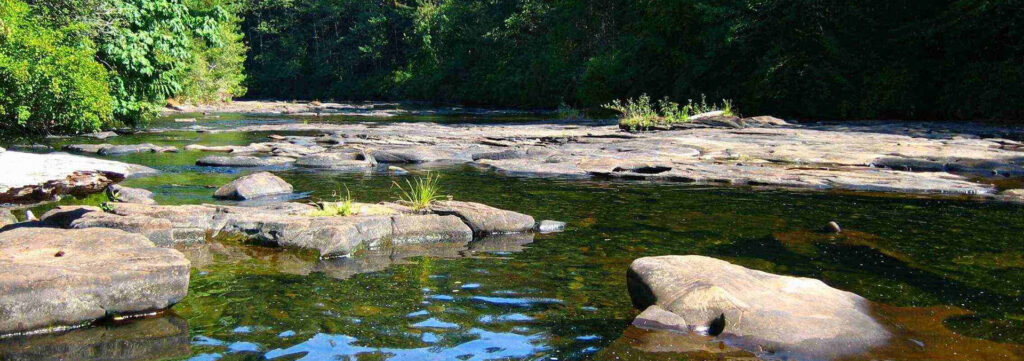There is probably no fly-fishing subject that has been written more about than that of mayflies in rivers. Much of our early fly-fishing history was based on solving the mystery of catching trout on imitations of mayflies. These small but often abundant aquatic insects are common inhabitants of lakes, and all flowing water – from tiny streams to large freestone rivers. There are about 700 species of mayflies, members of the insect order Ephemeroptera, found throughout North America. The greatest abundance and diversity of mayfly species are found in flowing waters. Mayflies are often referred to as “the canary in the coal mine,” as they are very sensitive to any amount of water pollution or a disturbed aquatic environment.
Mayfly Lifecyle
Mayflies undergo an incomplete metamorphosis or life cycle. It consists of egg, larval, and adult stages. Unique among insects, the adult stage has two parts.

Larvae (also referred to as nymphs) are bottom-dwellers, hiding or crawling within the rubble- or boulder-strewn river bottom. The larvae feed on decomposing and green plant matter. When mature, the larvae swim off the bottom to the surface of the river. As the larvae reach the surface film, the first adult form begins emerging from that larval shuck. Once fully emerged, the adult sits on the surface drying its wings while floating downstream. This adult, referred to as a dun, then flies off and lands in the riparian vegetation along the shore of the river. This is the non-reproductive stage of the mayfly. Within 48 hours, this adult form moults, and the second, reproductive form of the adult mayfly appears: the spinner. Mating then occurs, and egg-laden females return to the water to deposit the next generation of mayflies.
Duns are recognized by their cloudy or opaque, coloured wings, while spinners have clear wings. Depending on species, mayfly larvae and adults can range in size from less than three mm to over 15 mm in length.

Their prolonged and predictable emergences are perhaps the biggest reasons why mayflies can be such an important food source for trout. Trout and other fish species target larvae as they conduct their emergence swim; duns as they are partially emerged and as they sit on the water; and spinners that land or fall onto the surface film when laying eggs.
Matching the Lifecyle Stage for Fishing Success
The key to fishing success during a mayfly hatch is matching the natural larval and adult stages with the right size and colour of an appropriate fly. A floating line is used to present all the imitations of the mayfly life cycle. Ideal habitat for mayfly larvae ranges from slow-moving runs to fast-flowing riffle areas of the river. Remember, larvae are often associated with a rocky bottom substrate. Trout begin feeding on the larvae as they swim quickly, at a shallow angle, to the surface. Large numbers of swimming larvae make an easy meal for the foraging fish. Once larvae reach the surface film, they become even easier prey as they sit helplessly while beginning their emergence into the adult dun stage. This is when the angler begins seeing those swirling and gulping riseforms, as one after another emerger or adult is taken off the surface film. This creates the perfect scenario for dry-fly fishing that every fly fisher dreams about.

There are literally thousands of mayfly larval and adult-fly imitations to choose from, and all are based on imitating specific species of mayflies. There are also more generic or suggestive patterns for the angler to consider. Larval imitations such as the Pheasant Tail, Hare’s Ear, Prince, and Copper John nymphs are found in most fly-shop fly bins. Suggestive adult mayfly dun patterns include the Adams, Royal Coachman, Comparadun, and Parachute Hare’s Ear.
Whether experiencing your first or one hundredth, mayfly emergence will always get your adrenaline going. Watching large numbers of trout in a very small area of the river sipping or gulping mayflies off the surface film is an incredible sight. This is “matching the hatch” fishing at its finest.
Author: Brian Chan, Freshwater Fisheries Society of BC Ambassador
Photo Credit: Brian Chan
